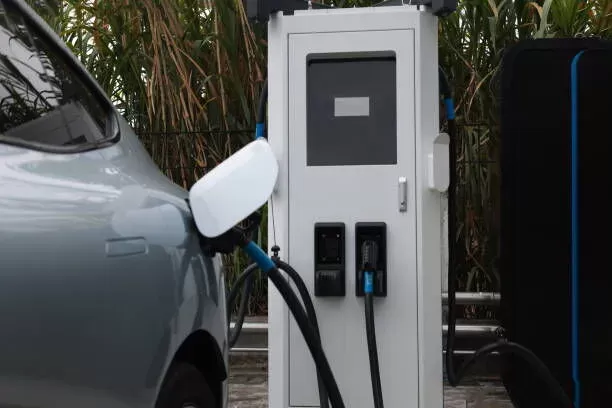Notifications

7 minutes, 53 seconds
-17 Views 0 Comments 0 Likes 0 Reviews

As a professional EV chargers manufacturer in China, Topper Company provides reliable electric vehicle charging station equipment and comprehensive charging solutions.
As electric vehicles (EVs) gain momentum globally, the supporting infrastructure must evolve in tandem. At the forefront of this transformation is the DC EV charging pile—a high-powered charging solution designed to drastically cut down the time it takes to recharge an EV battery. Unlike AC chargers typically found in residential settings, DC charging piles are engineered for public and commercial spaces where speed and efficiency are essential.
This article explores what DC EV charging piles are, how they function, how they differ from standard AC chargers, and why they are vital for the future of transportation. We’ll also cover key features, applications, challenges, and market trends driving innovation in this field.
A DC EV charging pile is a standalone charging unit that delivers direct current (DC) directly to an electric vehicle’s battery. In contrast to AC chargers, which rely on the vehicle’s onboard converter to process alternating current into direct current, DC charging piles handle the conversion themselves. This allows them to supply much higher power levels—enabling ultra-fast charging.
They are primarily installed in public spaces, such as highway rest stops, urban charging hubs, commercial centers, logistics hubs, and fleet depots, where quick turnaround times are crucial.
DC charging involves a coordinated system of hardware and software components designed to ensure safe and efficient energy transfer from the grid to the EV.
This is the physical device users interact with. It houses:
Charging connectors (e.g., CCS1, CCS2, CHAdeMO, GB/T)
Display screens and control buttons
Payment systems (RFID, QR code, NFC, apps)
This internal system converts AC power from the grid into high-voltage DC, using:
Rectifiers and transformers
Advanced power electronics
Smart controllers to regulate voltage, current, and temperature
Modern units feature real-time fault detection, thermal protection, and load balancing for safe operation.
Using protocols like ISO 15118 and OCPP (Open Charge Point Protocol), the charger communicates with the vehicle to exchange data such as:
Battery status
Maximum power limits
Charging preferences
Remote monitoring, diagnostics, and over-the-air firmware updates are handled through cloud platforms, enabling efficient network management.
Though often used interchangeably, there’s a distinct difference:
Charging Pile: A single unit designed to charge one EV at a time.
Charging Station: A facility with multiple charging piles, often with amenities like rest areas, cafes, or battery swapping services.
Think of a pile as a terminal and a station as the entire airport.
Delivering power from 50 kW to 350 kW or more, DC charging piles can charge an EV battery to 80% in as little as 15–30 minutes—a game-changer for long-distance travel and high-usage fleets.
Touchscreens, multilingual interfaces, mobile app integration, and contactless payments make DC charging piles intuitive and accessible.
Many DC piles support:
Load balancing
Peak shaving
Integration with solar or wind energy
Dynamic charging based on demand
Businesses and operators can generate income through:
Charging fees
Digital advertising on display screens
Premium services (e.g., priority charging or reservations)
DC charging piles are essential for:
Highways: Quick top-ups during long journeys
Urban Hubs: Reducing congestion and wait times in busy cities
Fleets: Powering logistics, taxis, and ride-sharing operations efficiently
Retail/Hospitality: Attracting EV-driving customers
Public Transport: Charging electric buses and vans at depots
Wide Voltage Range: Typically from 150V to 1000V
Connector Flexibility: CCS1, CCS2, CHAdeMO, GB/T support
Dynamic Power Sharing: Balances output across multiple EVs
Robust Build: IP54 to IP65 ratings for outdoor deployment
Advanced Safety Features: Overvoltage, short circuit, surge protection, and emergency stop
Installation involves not just the equipment, but also grid upgrades, civil works, and backend software systems.
Rapid charging demands large amounts of power, which can stress local grids. Battery energy storage systems (BESS) and smart grid integration are emerging solutions.
Not all EVs can accept high-speed DC charging. Ensuring vehicle-charger compatibility is essential during planning.
Due to complex internal systems, regular technical servicing and remote diagnostics are needed to maintain uptime.
The global DC EV charging market is poised for rapid growth, driven by:
DC chargers are increasingly paired with solar panels and battery systems for sustainable energy use.
Bi-directional charging will allow EVs to return excess power to the grid—turning vehicles into mobile energy assets.
New charging piles are built with modular architectures, simplifying maintenance and scalability.
AI is being used to predict usage patterns, optimize power distribution, and detect failures before they occur.
Incentives like subsidies, carbon credits, and grants are accelerating infrastructure rollout worldwide.
DC EV charging piles are revolutionizing how we power electric vehicles. With unmatched speed, intelligent features, and wide-ranging applications, they’re a cornerstone of tomorrow’s smart mobility network. As EV adoption continues to rise, investing in and understanding these high-tech charging solutions is more important than ever.
Whether you're a business owner, fleet manager, or EV infrastructure provider, embracing DC fast charging means investing in a faster, greener, and more connected future.Know more about Google SEO Directory
China EV Chargers EV Charger Manufacturer EV Charging Solutions

